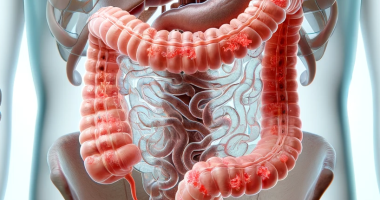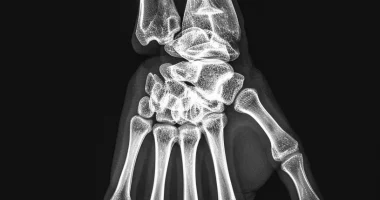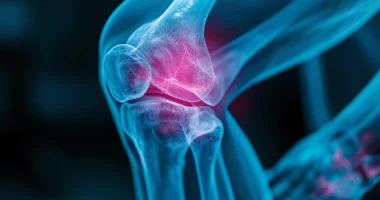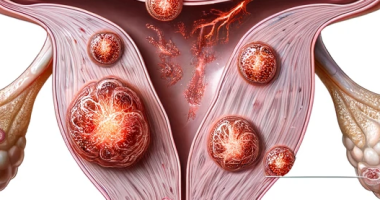Extragonadal germ cell tumors (EGGCT)
General information
Extragonadal germ cell tumors are neoplasms that develop from germ cells of the reproductive glands and localize outside the reproductive organs. For unknown reasons, the cells from which sperm or eggs should develop fall into other organs and tissues, giving rise to tumors. Most often, the pathological process affects the organs of the mediastinum, abdominal cavity, and pineal gland of the brain. Risk factors for developing extragonadal germ cell tumors are the male sex and age of the patient. Extragonadal germ cell tumors are treated by oncologists together with radiologists and chemotherapists. For this purpose, innovative technologies are used, thanks to which high survival rates of patients are achieved. Eliminating extragonadal germ cell tumors at early stages is possible without surgical intervention.
Types of extragonadal germ cell tumors
Extragonadal germ cell tumors develop mainly in men between the ages of 20-35, and they come in three types:
– Teratomas are benign tumors that develop more frequently in newborns and children, although all three types of germ-cell tumors can occur at any age.
– Seminomas are malignant tumors.
– Non-seminomas is the fastest-growing tumor type, metastasizing to the bone, lymph nodes, lungs, liver, and other organs.
Symptoms of extragonadal germ cell tumors
The symptoms of this disease directly depend on the localization of the tumor and the speed of its maturation. Most often, extragonadal tumors are localized in the mediastinum and brain, so the symptoms are most often associated with the head and chest:
– Severe headaches;
– Pain in the chest area;
– Coughing and breathing problems
– High body temperature;
– Chronic feelings of fatigue;
– Coordination disorder;
– Deterioration of vision.
It is important to note that these symptoms are characteristic of many head and chest conditions, so they are insufficient to diagnose correctly. However, this does not mean you should ignore their presence: it is always better to rule out the worst possibilities.
Diagnosis of extragonadal germ cell tumors
The primary diagnostic program for suspected extragonadal germ cell tumors includes the following procedures:
- Comprehensive blood tests and oncological marker tests to determine the type of tumor or to monitor the effectiveness of the treatment used;
- bone and chest x-rays;
- to test the concentration of sex hormones in the blood;
- liver enzyme tests;
- ultrasound scan;
- CT, MRT, PT-CT;
- cytogenetic analysis
- a biopsy of the affected tissue.
Treatment modalities for extragonadal germ cell tumors
Treatment of extragonadal germ cell tumors can be conservative and surgical. To combat the pathologic process, apply:
- surgical procedures;
- chemotherapy;
- radiotherapy;
- targeted therapies.
A consilium makes the treatment plan, taking into account the localization of the focus, the peculiarities of the clinical picture, and the results of additional examination.
Surgical operations
Surgery is the primary method of treatment of benign extragonadal germ cell tumors. In the malignant process, surgical intervention is combined with other therapeutic techniques.
Surgical removal of the neoplasm is the primary and most effective treatment method. It provides a favorable prognosis in treating benign tumors and non-seminoma germ cell neoplasms. Surgeons use all opportunities to perform surgery in a minimally traumatic laparoscopic way. Such interventions do not require significant incisions; they are characterized by a very low probability of complications and a short and easy recovery period. In the case of malignant neoplasms, surgical treatment is used in combination with other methods.
Chemotherapy
Treatment with cytostatics is recommended for large malignancies with metastases that have spread. Most clinics currently prefer multi-agent chemotherapy. The method consists of the simultaneous use of several cytostatic agents. Such treatment allows faster remission of the disease.
The treatment program for germ cell neoplasms includes polychemotherapy – the simultaneous use of several types of cytotoxic drugs. Chemotherapy courses may be prescribed before surgical treatment to reduce the size of the neoplasm and facilitate its subsequent surgical removal. Chemotherapy is also indicated after surgery to destroy single pathologic cells retained in the patient’s body and prevent recurrence. Doctors use chemotherapy drugsof the latest generation, characterized by minimal toxicity and mild action. Patient feedback indicates that the side effects that develop after chemotherapy are expressed very little.
Radiotherapy
Radiotherapy, or radiation treatment, is most often used for intracranial germ cell tumors. The survival rate of patients after such treatment ranges from 70% to 100%. The method is often combined with chemotherapy, significantly increasing its effectiveness.
Radiotherapy sessions are necessary in the treatment regimen of intracranial germ cell neoplasms. In these cases, irradiation contributes to a significant reduction in the tumor size up to complete elimination, painful symptoms are eliminated, and the patient’s condition normalizes. Due to severe complications that develop as a result of irradiation with high doses of ionizing radiation, in recent years, in most cases, the safest for the patient is used in low-dose radiotherapy. Radiotherapy is usually combined with chemotherapy courses to increase the effectiveness of treatment.
Irradiation at modern TrueBeam and Novalis units uses the technology of IMRT (intensity-modulated radiation therapy). Before the session, the localization and shape of the pathological focus are precisely determined, and the direction of radioactive beams is calculated. During the procedure, the direction is adjusted depending on the slightest change in the patient’s body position. The main advantage of this technology is the ability to change the intensity of irradiation of different areas of the tumor and minimal impact on healthy tissues.
Targeted therapy
Targeted therapy is a relatively new method that is actively used worldwide. Its essence lies in the prescription of drugs that block the tumor’s molecular processes. Target therapy allows one to succeed even in neglected extragonadal germ cell neoplasms.
This innovative method of treatment is based on targeted destructive action of drugs on pathological cells without harming healthy cells. High efficiency is demonstrated by drugs based on monoclonal antibodies specific to the tumor cells. Antibodies recognize tumor cells and their destruction by the patient’s immune system. Targeted drugs from the group of tumor angiogenesis inhibitors are also used to treat germ cell neoplasms. With their help, it is possible to inhibit the formation of the tumor’s blood vessels, which stops the supply of oxygen and nutrients to pathological tissues.
All these treatment options are available in more than 370 hospitals worldwide (https://doctor.global/results/diseases/extragonadal-germ-cell-tumours-eggct). For example, Mediastinal cancer surgerycan be done in 22 clinics across Turkey for an approximate price of $6.8 K (https://doctor.global/results/asia/turkey/all-cities/all-specializations/procedures/mediastinal-cancer-surgery).



